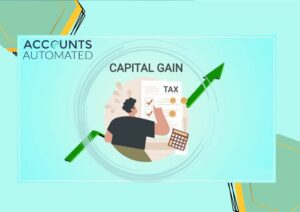With the sale season just around the corner, many retail businesses must be thinking about setting up their eCommerce store to maximize sales. Covid has changed the dynamics of shopping, many people have found comfort in shopping online even after the lockdown has been lifted all across Australia.
It is no surprise that so many eCommerce stores are popping up these days. With a new eCommerce store, there comes an obligation of registering for Goods & Services Tax. Before preparing for GST, a good knowledge of what it is will definitely come in handy. If you are thinking of setting up an eCommerce store for your business then here’s what you need to do to get started:
What is GST?
Goods & Services Tax (GST) is a tax applied to the consumption of goods within Australia. It accounts for an additional 10% of the total sales price of the product. Businesses that are registered for GST charge an extra 10% on the sales price for their goods/products.
Methods to account for GST
The methods used to account for the GST are similar to the ones used for the income tax. There are two methods commonly used that only vary by the time when revenue and expenses are recognized.
- Accrual method: It is applied when the GST is claimable and payable after receiving the tax invoices
- Cash method: It is applied when the GST is payable right after receiving and claimable when paid
The method you pick for your business depends primarily on the turnover. Most businesses usually operate on the cash method as it is convenient to pay after the cash has been received.
Registering for Goods & Services Tax (GST)
First off, the question is if your business qualifies for it or not.
- If it has an ABN, it needs to register for GST
- If it has a turnover or an expected income of $75,000 or more
For those of you who do not know what a turnover is, it is basically ‘total taxable sales’ (excluding export sales) in the financial year and the expected sales for the remainder of the same year.
Ecommerce businesses operating through aggregator platforms like Amazon, such platforms add the GST to your set sale price which means that you are automatically registered for the GST. Here the turnover condition won’t apply.
When is it charged?
Australian Taxation Office (ATO) collects the GST from businesses on a quarterly basis. The tax return is commonly referred to as Business Activity Statement (BAS). However, businesses do have a choice to go for the Annual Business Activity Statement through quarterly lodgment is always preferable for eCommerce businesses.
Summing up
Preparing for GST can be a tough nut to crack especially when you are new to it. You can always hire a professional to do it on your behalf.
Still not sure if it applies to your business? Feel free to contact us!
